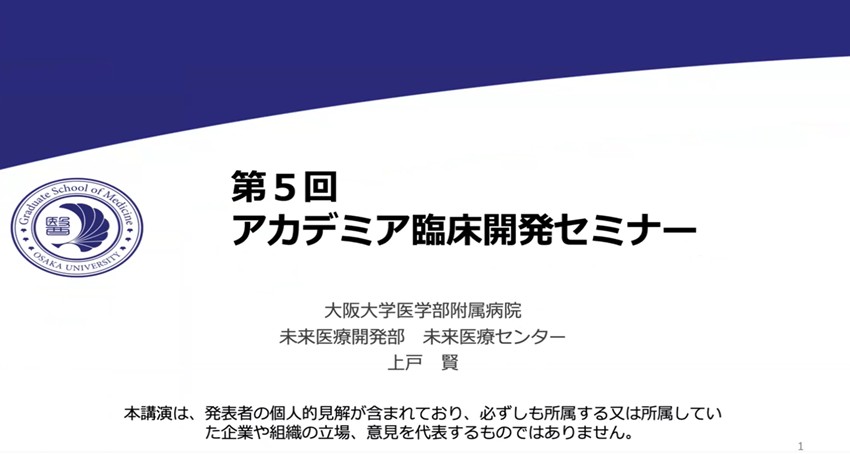(5th Seminar Report) Academia Clinical Development
My experience working at PMDA: Behind the scenes of medical device approval reviews
On March 7th, 2025, we held the 5th Academia Clinical Development Seminar online. In this seminar, we welcomed Dr. Satoshi Kamido, Medical Center for Translational Research, University of Osaka Hospital, to speak on the topic of "My experience working at PMDA: Behind the scenes of medical device approval reviews."
First, he explained the purpose and regulations of the Pharmaceuticals and Medical Devices Act. He told us that the PMDA's primary objective is to implement necessary regulations to prevent the occurrence and spread of health and healthcare hazards, thereby improving health and healthcare. Furthermore, he explained that in the approval review, based on the submitted documents, the benefits of clinical efficacy are weighed against the risks that may occur when introduced into clinical practice. The approval review process will proceed if the risks are acceptable compared to the benefits.
Secondly, he explained the difference in roles between the PMDA and the Ministry of Health, Labor, and Welfare as follows: the PMDA is mainly responsible for carrying out scientific judgments such as reviewing, investigating, and consulting on clinical trials for pharmaceuticals, etc., while the Ministry of Health, Labor and Welfare is responsible for implementing administrative measures such as system design and legal amendments.
He also mentioned with regard to software as medical devices (SaMD) that it is important to consider what you aim for and organize the product's positioning, because applicability changes depending on the product's claims, even if the device has the same function.
At last, he talked about the interpretation of "clinical positioning" and "conceptual requirements" in the context of regulatory development for medical devices. Regarding "clinical positioning,"
he emphasized the importance of identifying the clinical issues that the product aims to address when considering product evaluation. He also noted that it is easier to approach this by with a comparison to existing treatment or diagnostic methods. Regarding "conceptual requirements," he used a washing machine as an example to explain evaluation points as "a conceptual representation of the performance that the product should have," which is all or a combination of minimum requirements, market needs, and development concept elements.
At this seminar, he gave a comprehensive and easy-to-understand explanation of medical device review, which deepened our understanding of the process toward practical application.
There was an active question-and-answer session with the participants, and the seminar ended with great success.
The next Academia Clinical Development Seminar is scheduled for May. We look forward to welcoming you to the next seminar.



